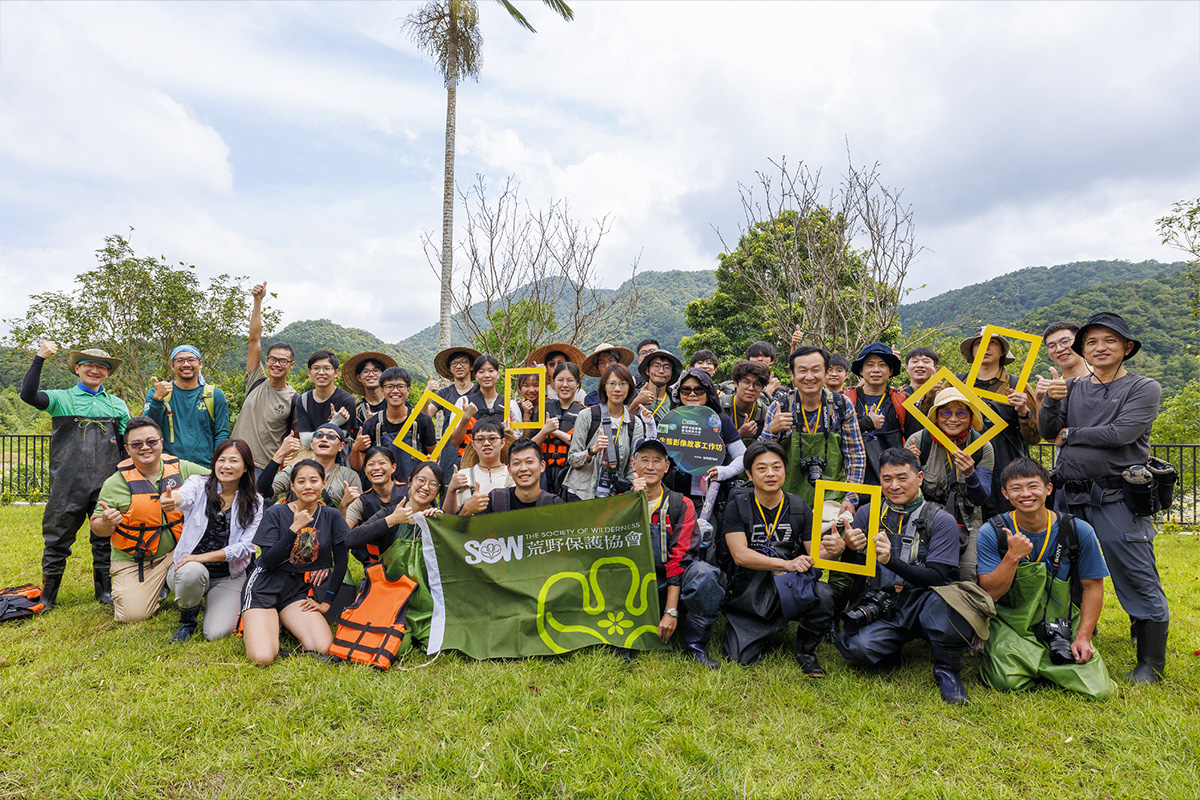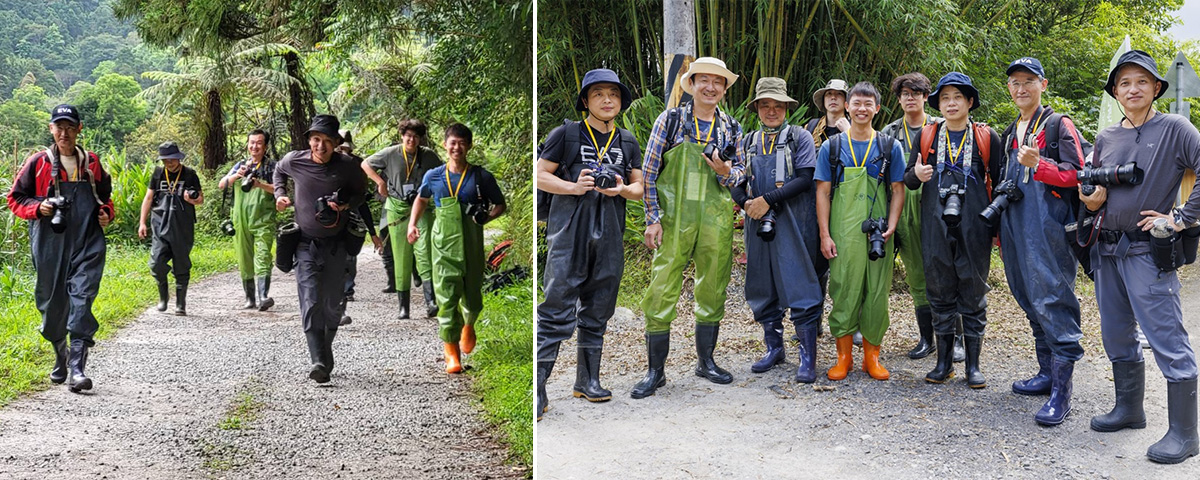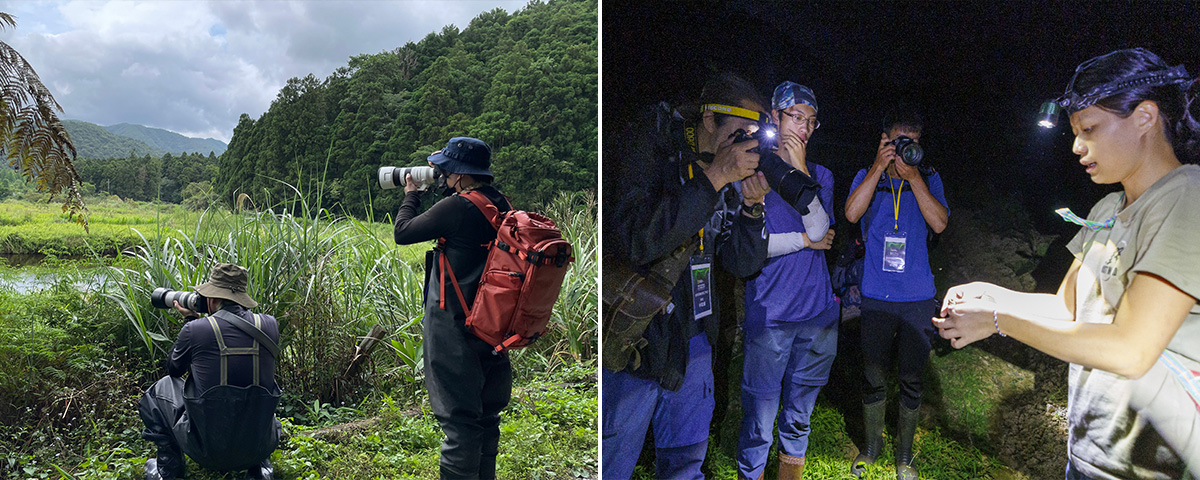
Photo Credit: National Geographic
The National Geographic Taiwan Photo Contest 2024, exclusively sponsored by Wistron Foundation, promoting ecological awareness in a more profound way. The first Nature Photography & Environmental Storytelling Workshop, led by two-time Golden Tripod Award winner and National Geographic photographer Chen Yuwen, took participants to Shuang-lian-Pi (“The Two Linked Ponds”) in Yuanshan Township, Yilan County, which is the only lake in Taiwan with floating island. Participants delved into this National level Important Wetland and Major Wildlife Habitat, protected by The Society of Wilderness for over 20 years, hoping to shed light on the beauty and melancholy of Shuang-lian-Pi through four workshops spanning from late spring to early autumn. The goal is to help more people appreciate and understand the history and stories of preserving this habitat.

The 12 students were selected from previous finalists of the National Geographic Photo Contest. Hoping to shed light on the beauty and melancholy of Shuang-lian-Pi through four workshops spanning from late spring to early autumn, the goal is to help more people appreciate and understand the history and stories behind preserving this habitat
The 12 participants were selected from past finalists of the National Geographic Photo Contest. Coming from diverse backgrounds, they include a Taiwanese teacher actively involved in citizen science research, a public servant working in ecological conservation, retirees who have found a new focus in photography, office workers who work on wildlife-friendly farmlands on weekends, father who enjoy nature and taking photos with his son, and underwater photography enthusiasts who love diving but are less familiar with terrestrial wildlife. Besides the professional experience of Chen Yuwen, most students believe that they can also learn from each other.
The Society of Wilderness's environmental education and habitat conservation Base at Shuang-lian-Pi encompasses the work of ecological restoration, conservation research, environmental education, and sustainable farming. Protecting Shuang-lian-Pi for over 20 years, the Base currently has five full-time partners stationed there. "But the work is never done," Deputy Director Shi Peijun says with a smile. More than 20 years ago, rare aquatic plants were dug up from the lake's edge by excavators. The partners at that time rescued those plants and planted them elsewhere for conservation. In recent years, Wistron's volunteers came to Shuang-lian-Pi to help propagate the rare Shuishe willow (Salix kusanoi) that originally grew on the floating island, amidst heavy rain. Today, the willows they planted in the sanctuary have grown to the height of a building, and this spring, they bloomed with fluffy green catkins, as if to announce that diligent conservation efforts will eventually bloom and bear fruit.
Actually, Teacher Chen Yu-Wen had visited Shuang-lian-Pi back in 2001, documenting the environment and challenges at that time. He laughed and said that the Shuang-lian-pi project was one of the top three most frustrating project in his career. "Because the residents back then were unwilling to talk; everyone was looking forward to development and hoping for economic growth, while the media always took an opposing stance." However, he believes that the media should act as a bridge, "able to integrate different forces together." Today, he brought workshop participants to Shuang-lian-Pi not only to show them how to create photo stories but also to help them understand Shuang-lian-Pi and recognize the immense efforts that have gone into preserving this important aquatic plant sanctuary over the years.
In an exclusive sponsorship of the National Geographic Photo Contest series and a supporter of wilderness conservation efforts for over a decade, the Wistron Foundation, represented by Sr. Project Manager Jessica Tsai and Sr. Associate Jack Chung, fully participated in the first workshop held on May 17-18. Jessica emphasized that wildlife and the environment cannot speak for themselves and hope that after getting to know Shuang-lian-Pi, the participants could use their ability and observations to document Shuang-lian-Pi and give voice to its ecosystem and wildlifes. "Only by seeing can we generate power."
This workshop coincided with student volunteers from the Department of Life Sciences of National Taiwan Normal University, who assisted in removing the fast-spreading, invasive plant Giant Salvinia (Salvinia molesta), which competes with native vegetation. They also managed the lush growth of native Wild Trapa (Trapa japonica), preparing them for transplantation into areas cleared of invasive species. Workshop participants joined the university volunteers, donning waders—fondly known as “frog suits”—to capture precious images of their hard work. The evening of May 17th featured a nocturnal exploration led by partners from The Society of Wilderness, where participants encountered various nocturnal creatures such as the Bankor toad (Bufo bankorensis), the square-headed cat snake (Boiga kraepelini), the emerald green treefrog (Zhangixalus prasinatus), and the common Chinese treetoad (Hyla chinensis), creating unforgettable memories for all involved.

During the day, we photographed the plants and environment of Shuang-lian-Pi, and at night, we embarked on a night-viewing experience. Guided by partners from The Society of Wilderness, we searched for nocturnal animals, making unforgettable memories as we encountered Bankor toad, square-headed cat snake, emerald tree frogs, and common Chinese treetoad.
2024 National Geographic Taiwan Photo Contest Submission Information
Submission Period: April 15 (Mon) - June 15 (Sat)
Photo Contest Registration
National Geographic Facebook Fan Page
National Geographic Official Website
*For more information, please refer to the "National Geographic Magazine Event Page."




 中
中